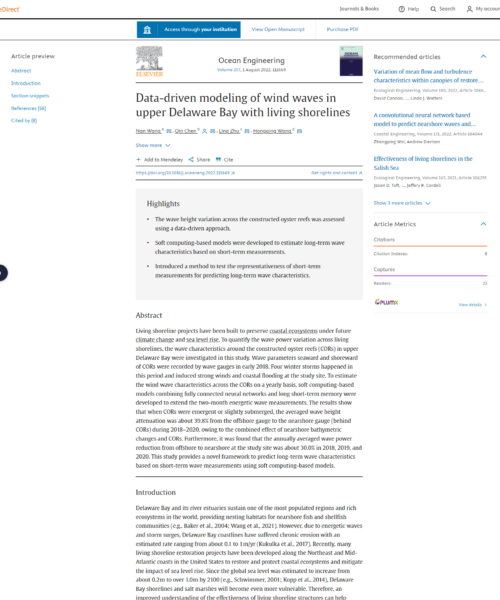Abstract or Summary

Living shoreline projects have been built to preserve coastal ecosystems under future climate change and sea level rise. To quantify the wave power variation across living shorelines, the wave characteristics around the constructed oyster reefs (CORs) in upper Delaware Bay were investigated in this study. Wave parameters seaward and shoreward of CORs were recorded by wave gauges in early 2018. Four winter storms happened in this period and induced strong winds and coastal flooding at the study site. To estimate the wind wave characteristics across the CORs on a yearly basis, soft computing-based models combining fully connected neural networks and long short-term memory were developed to extend the two-month energetic wave measurements. The results show that when CORs were emergent or slightly submerged, the averaged wave height attenuation was about 39.8% from the offshore gauge to the nearshore gauge (behind CORs) during 2018–2020, owing to the combined effect of nearshore bathymetric changes and CORs. Furthermore, it was found that the annually averaged wave power reduction from offshore to nearshore at the study site was about 30.0% in 2018, 2019, and 2020. This study provides a novel framework to predict long-term wave characteristics based on short-term wave measurements using soft computing-based models.